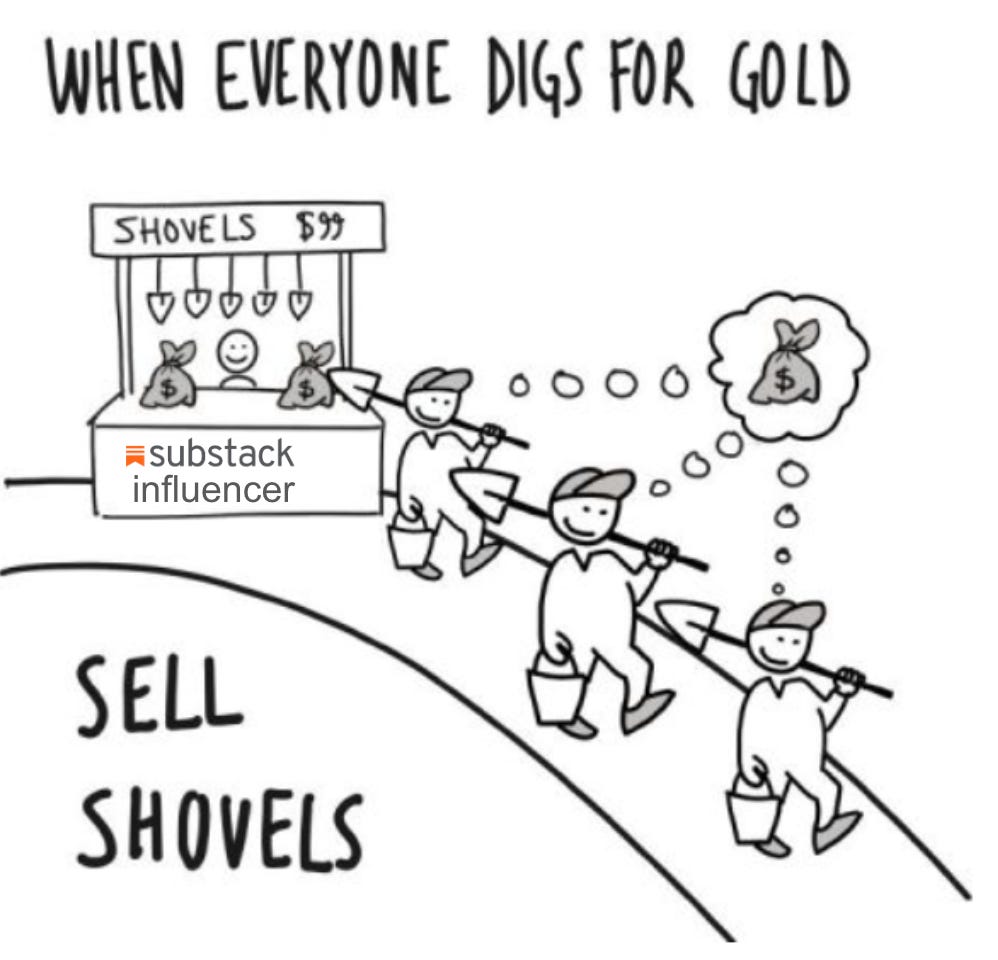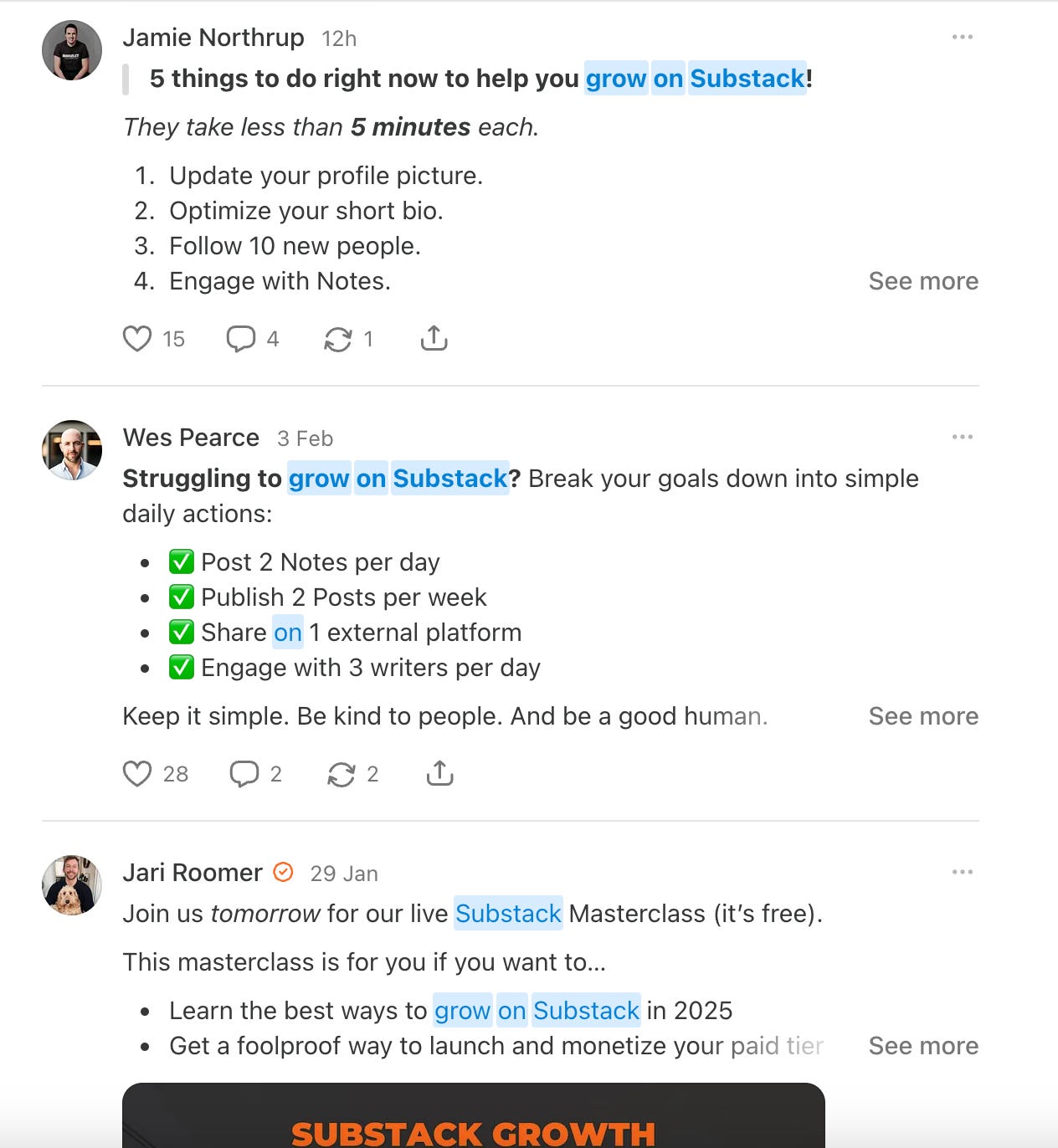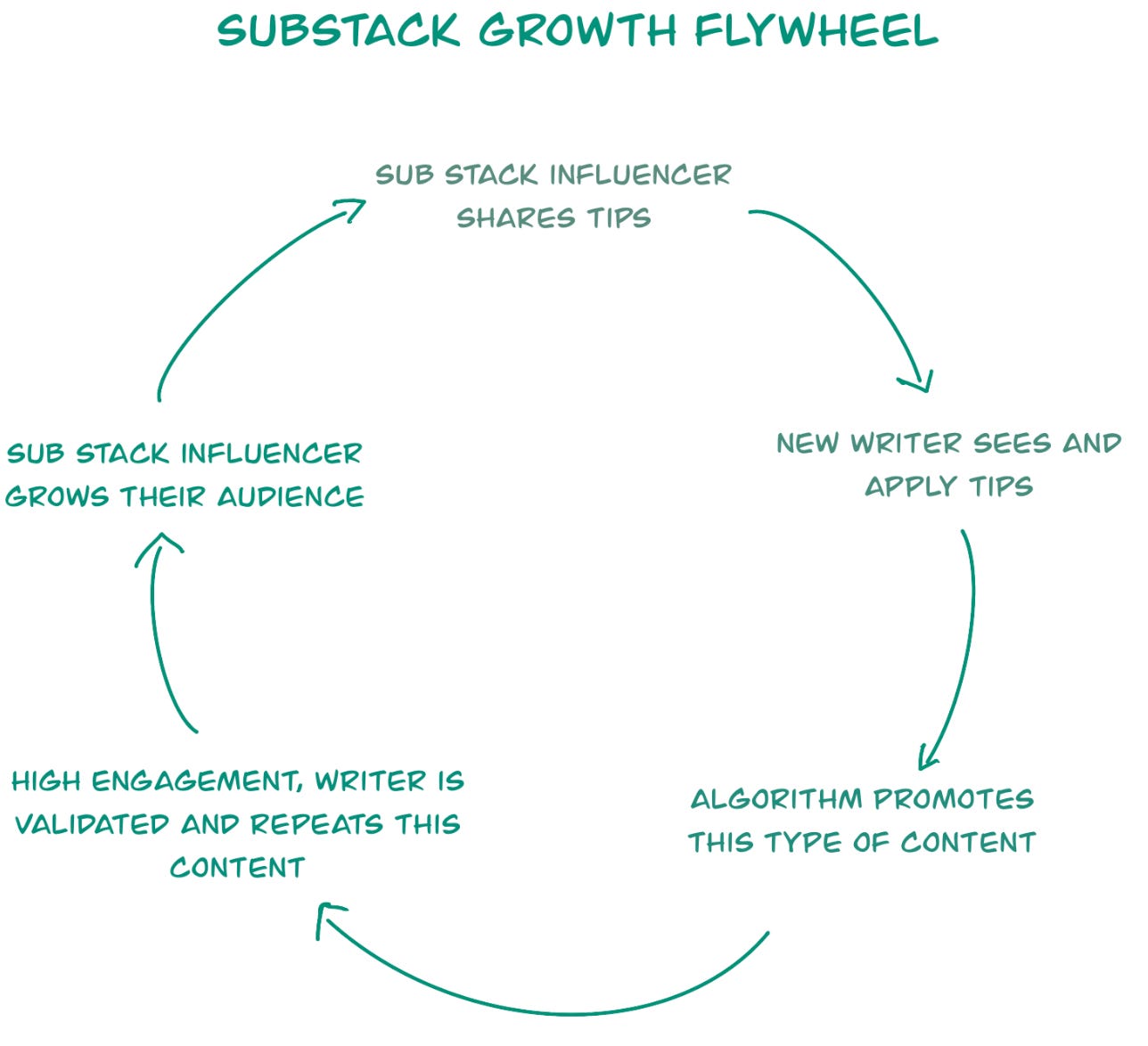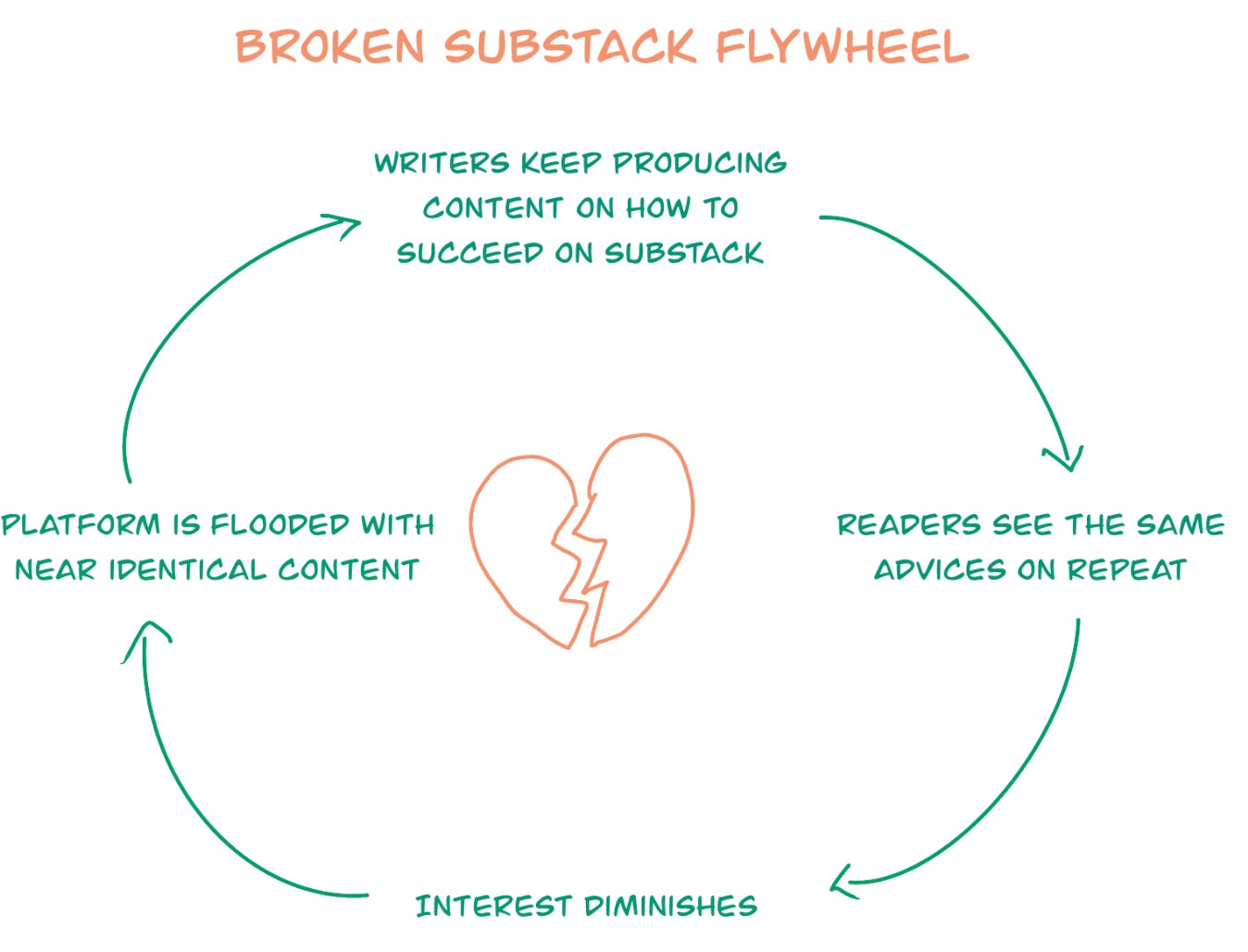The problem with Substack that no one talks about
Why so many Substack writers are just writing about Substack
A year ago, I started writing. Like many others, I hesitated between LinkedIn, Medium, and Substack as my primary platform. I had heard that Medium was great for engagement, while Substack was ideal for building a loyal audience—but only if you already had one. Given that challenge, I opted for Medium.
After some success there—50k cumulative views, thousands of claps, but only 212 subscribers—I decided it was time to move to Substack. That’s when I noticed something fascinating.
The Substack success echo chamber
The first thing that struck me was the high volume of people discussing their own success on Substack.
My feed quickly filled with:
Writers giving advice on how to grow on Substack—which often boiled down to writing about growing on Substack.
People following these growth strategies and then sharing their own successes, thus reinforcing the cycle.
It started feeling like a gold rush, where the ones selling the shovels (the Substack growth influencers) seemed to be thriving the most. And while their insights were useful at first, I quickly found myself struggling to discover content that actually aligned with my interests: tech, UX/UI, monetization, AI, fintechs—things I originally came to Substack for.
This led me to wonder: why does the algorithm favor this type of content so aggressively?
The Substack flywheel effect
Substack is in direct competition with Medium, LinkedIn and other platforms for content creators. With growing competition, it’s more important than ever to differentiate and attract an audience.
In The Cold Start Problem by Andrew Chen, every network has a “hard side” and a “soft side”, which refers to the supply-demand dynamics of a platform.
• Hard side → The critical, harder-to-acquire group that drives the network’s value.
• Soft side → The easier-to-acquire group that benefits from and engages with the hard side.
For example:
• In Substack, writers are the hard side (they create content and attract readers), while readers are the soft side (they consume content).
• In Uber, drivers are the hard side (they supply rides), while riders are the soft side (they create demand)..
To grow, Substack needs to make sure that new writers feel successful quickly, reinforcing their commitment to the platform.
I suspect that they have been trying to encourage new writers by encouraging this growth flywheel:
Substack influencers share tips on how to grow an audience.
New writers see these tips and apply them.
Substack’s algorithm promotes this type of content because it keeps engagement high and retains new writers.
New writers gain traction, feel validated, and write more about their success and strategies, often repeating similar content trends.
Substack influencers grow their audience further, are reinforced and create more content
This cycle makes perfect business sense—it keeps writers engaged and creates social proof that Substack is the best place to write. However, it also introduces a problem: content redundancy and saturation, leading to a broken flywheel:
Writers keep producing content on how to succeed on Substack.
Readers see the same advice repeated in different forms.
Interest in fresh content diminishes, making it harder for other niches to break through.
The platform gets flooded with near-identical posts, reducing overall content diversity.
This repetitive loop not only affects discoverability but also risks alienating readers who crave unique, high-value content.
The challenge of differentiation
This isn't just a Substack issue—every major writing platform is battling content saturation:
LinkedIn has been overrun with AI-generated engagement bait and posts that follow predictable, formulaic structures—often taking the form of absurd personal narratives like, “I proposed to my girlfriend this week, here’s what I learnt about B2B sales.” (I highly recommend this the SubReddit LinkedinLunatics if you want to read more of these posts).
Medium recently cracked down on AI-generated content, implementing stricter content rules in an attempt to maintain quality.
Substack, while still a great platform, faces the risk of becoming pretty boring if growth content drowns out genuinely interesting and original writing.
The pros and cons of Substack’s approach
Pros:
✅ Fast onboarding for new creators – I immediately found content that helped me grow when I joined
✅ Network effects kick in quickly – Unlike other platforms where you post into the void, Substack helped me connect with existing audiences
✅ Sustainable creator ecosystem – The community is very supportive on Substack and really helps each other grow
Cons:
⚠️ Echo chamber effect – Because growth-focused content performs well, many writers end up producing similar content which can feel repetitive at times.
⚠️ Focus on growth over content – Writers may feel pressured to optimize for engagement (e.g., sharing milestone updates) rather than purely focusing on writing on their niche or passion topics.
Here are two ways Substack could improve its content ecosystem:
Better feed filters: I would love to be able to toggle between growth content and industry-specific content. Some days I want tips to grow my Substack, but other days I don’t. Give me the choice.
Reduce content redundancy: If a post is just repeating the same Substack growth strategies using a template, it should be downgraded in visibility. Prioritize fresh insights over repetition.
By keeping both writers and readers in mind, Substack can avoid the content loop trap that has diluted LinkedIn’s quality.
Let’s keep Substack authentic, ensuring it remains the best place not just to write, but also to read and discover meaningful content.







The broken flywheel concept makes so much sense. And it's already happened everywhere and is one reason social media has become boring and pointless. I see these "growth" posts now and then on Substack but have been actively muting and sometimes blocking them, and keep liking and engaging with topics I'm interested in such as photography and that has cleaned up my feed.
Your suggestions to fix the problem are excellent. Feed filters would be great.
This was fascinating to read. I’ve noticed the same that you shared. My notes about Substack get more engagement than my niche notes. A feed filter based on content topic would be awesome.